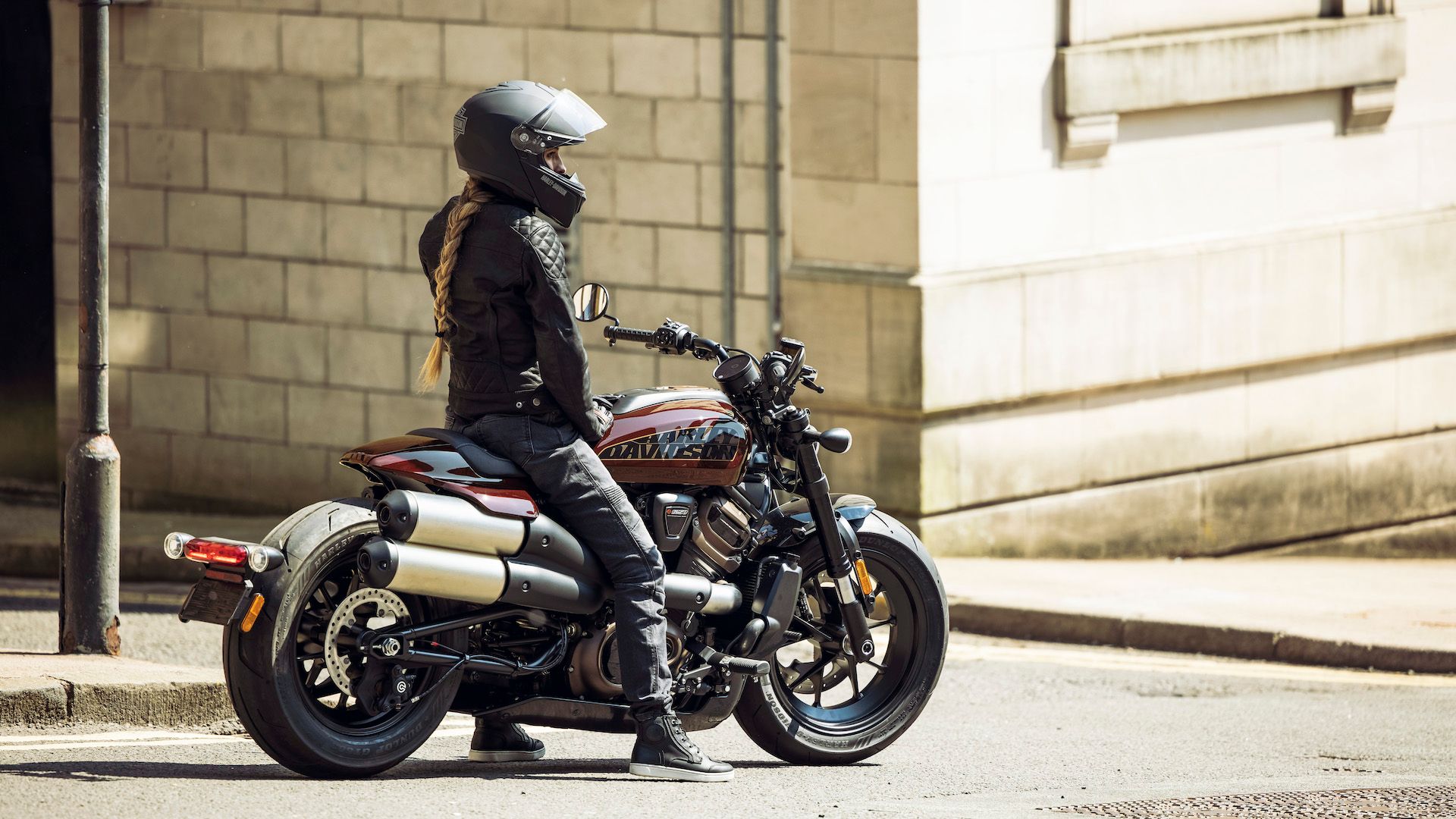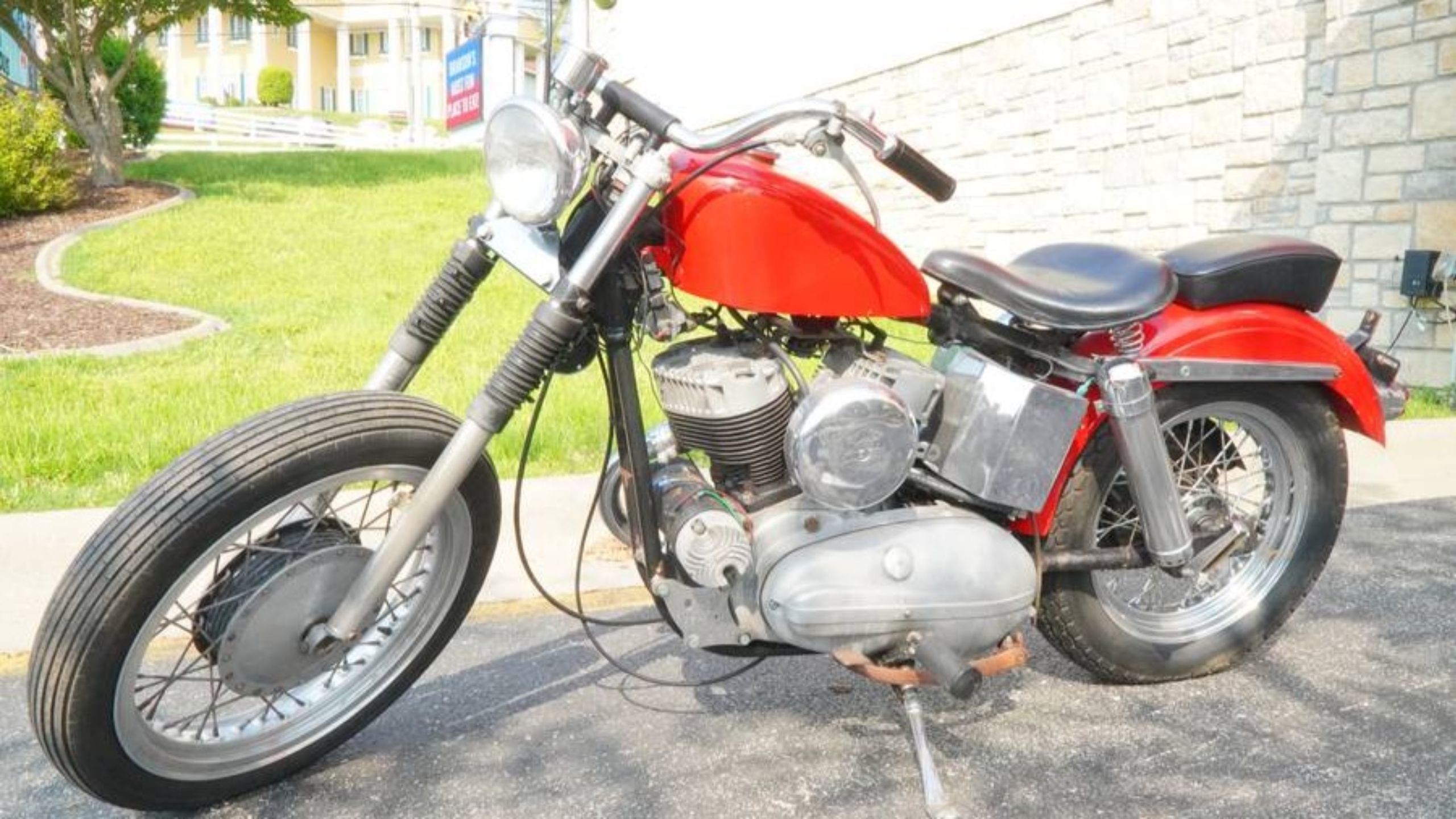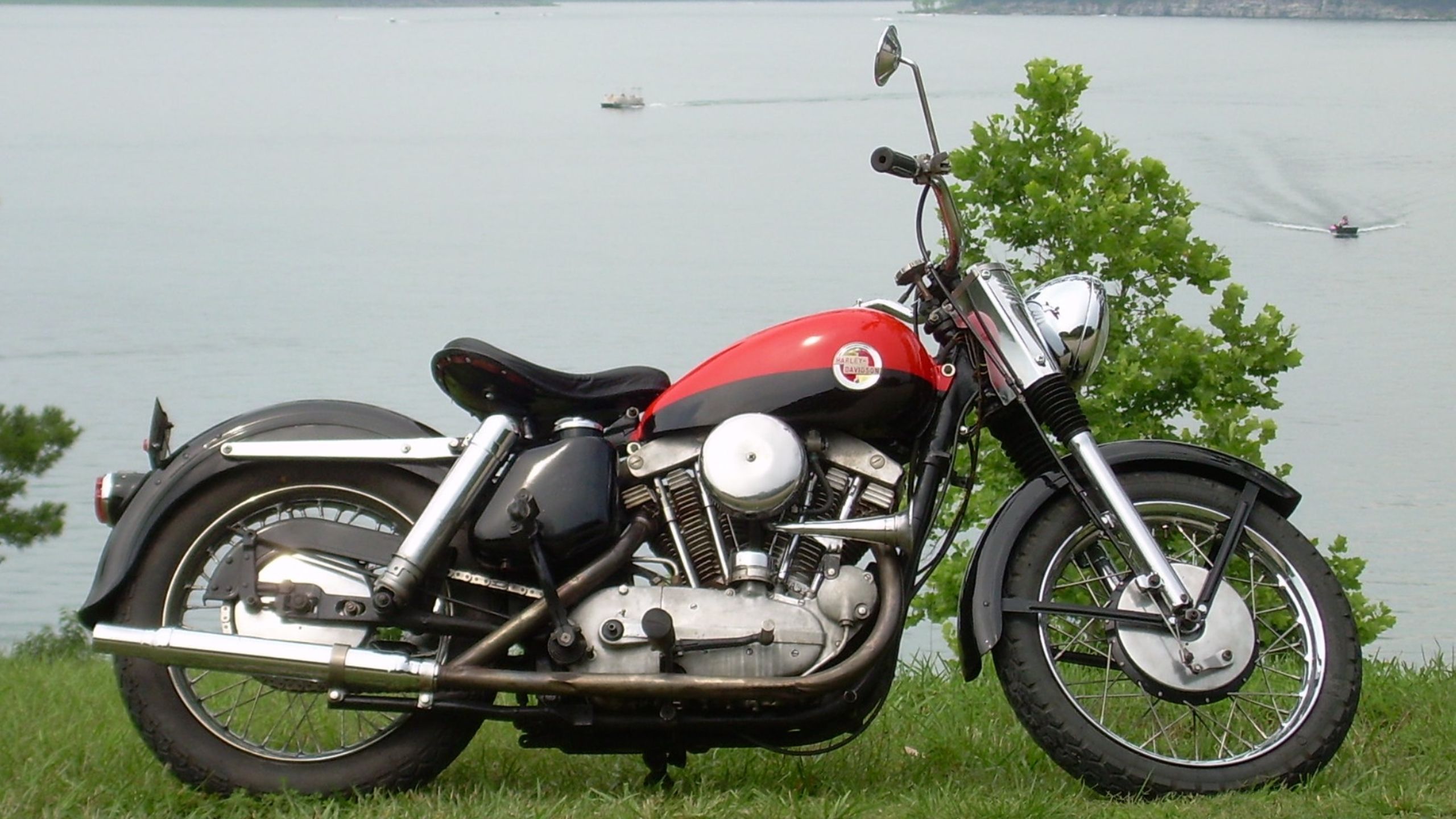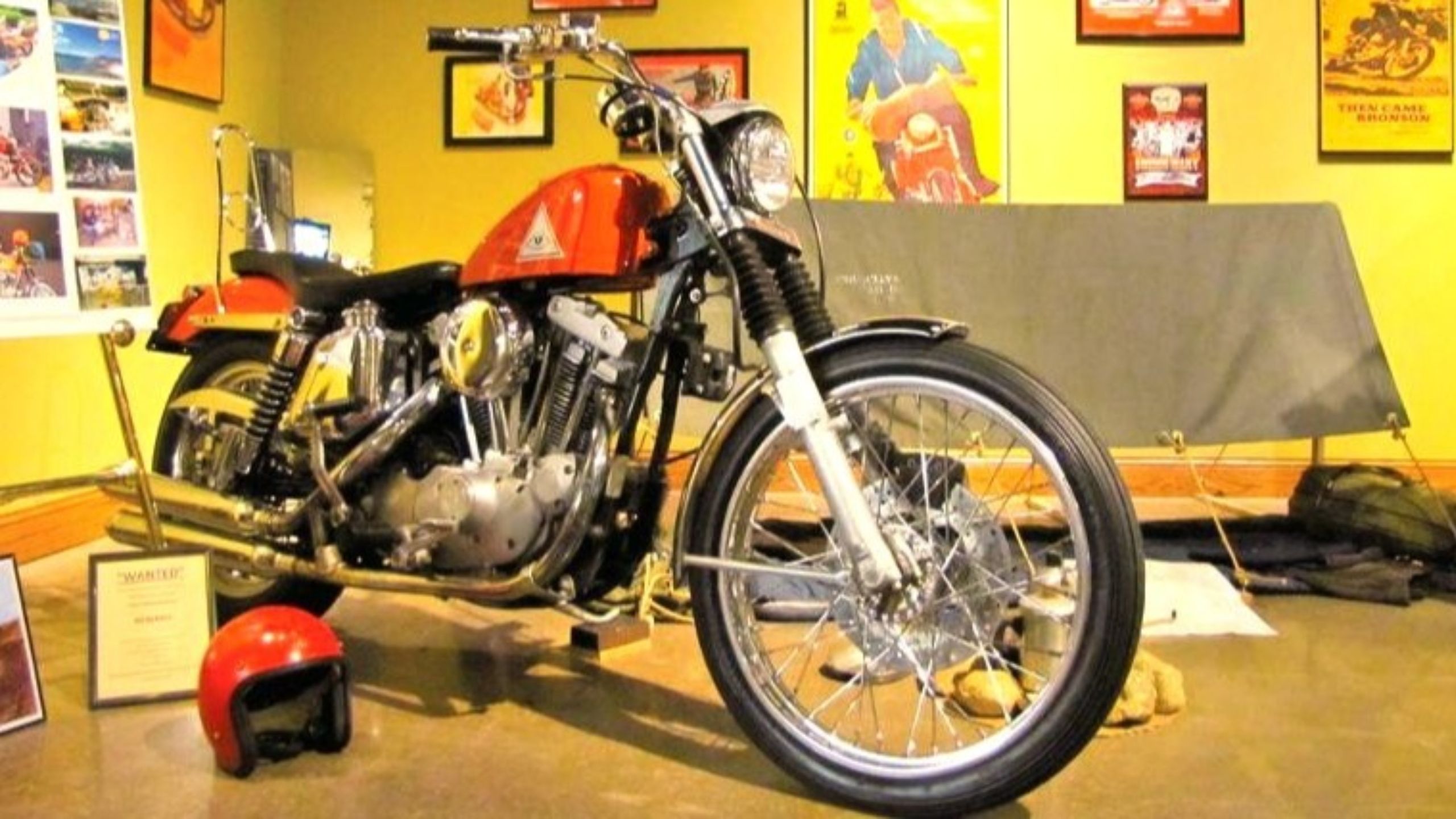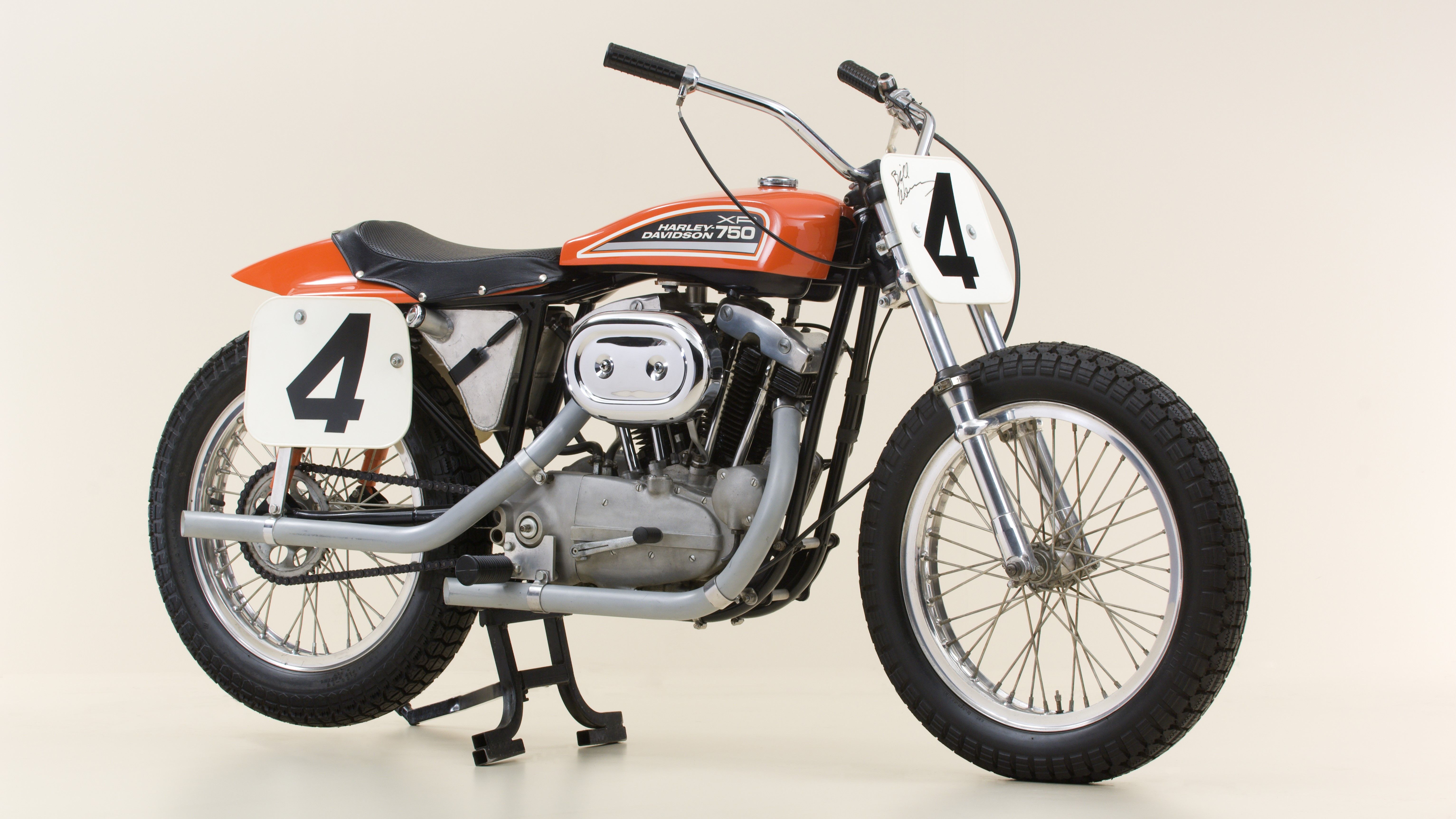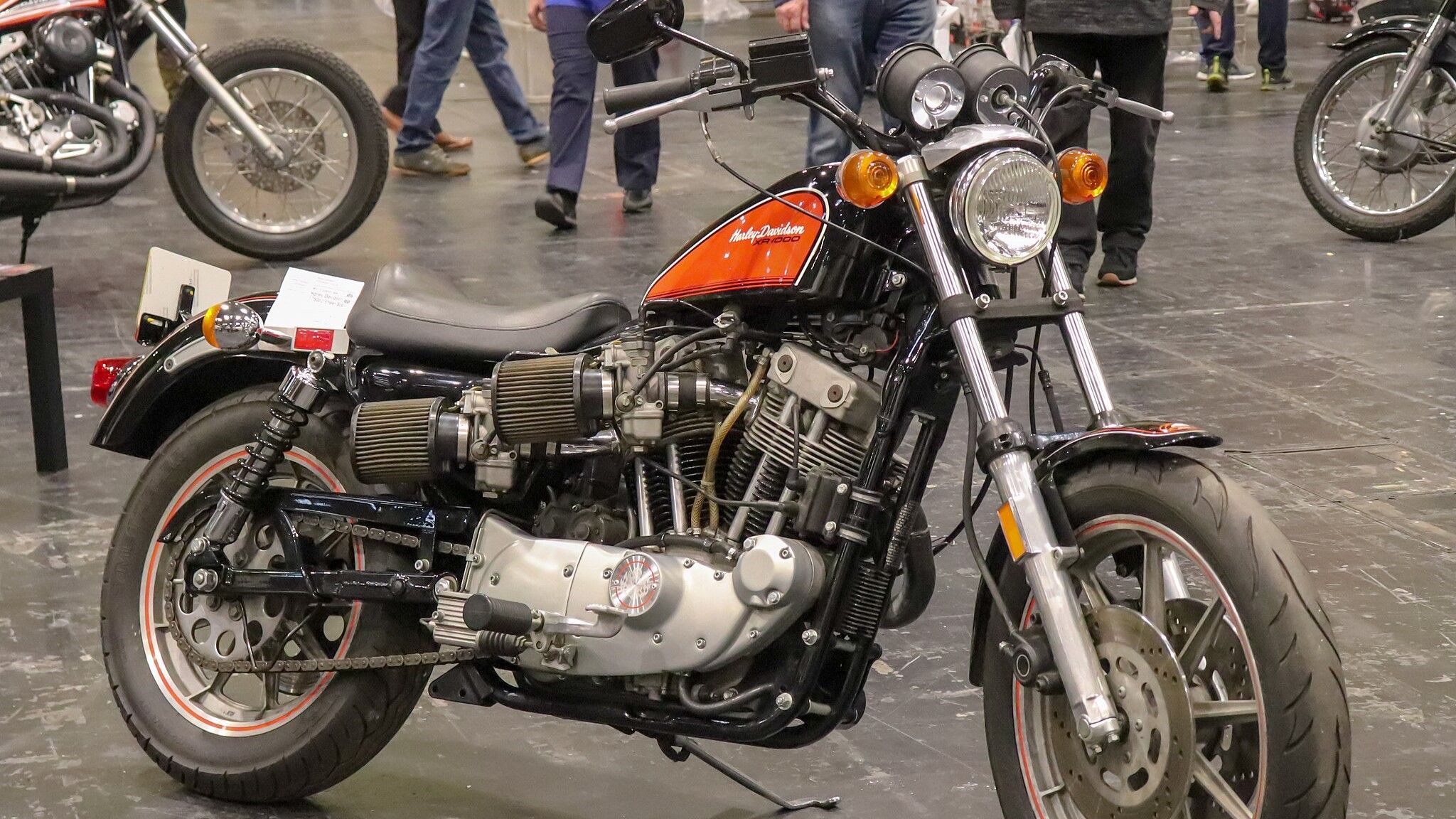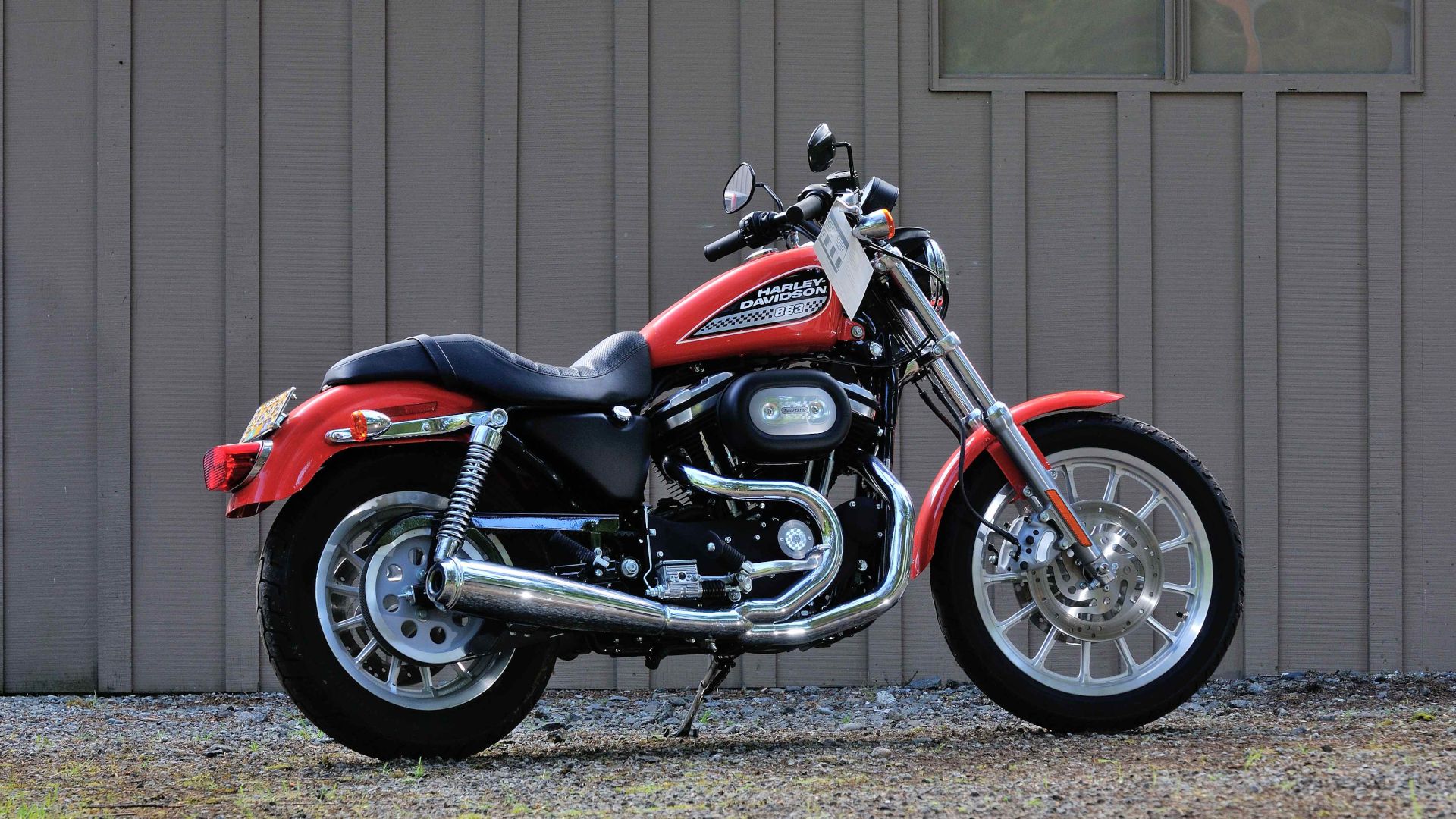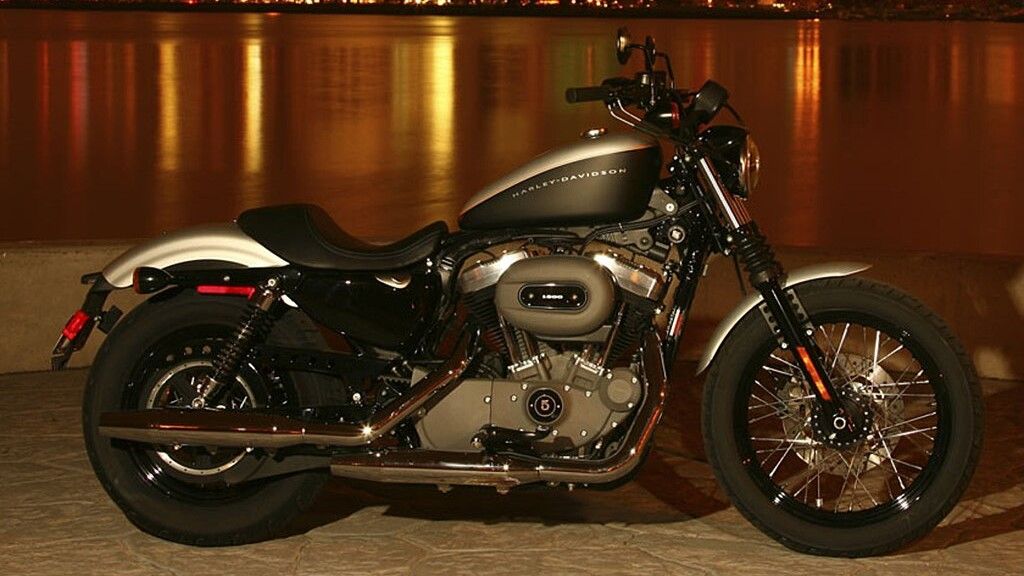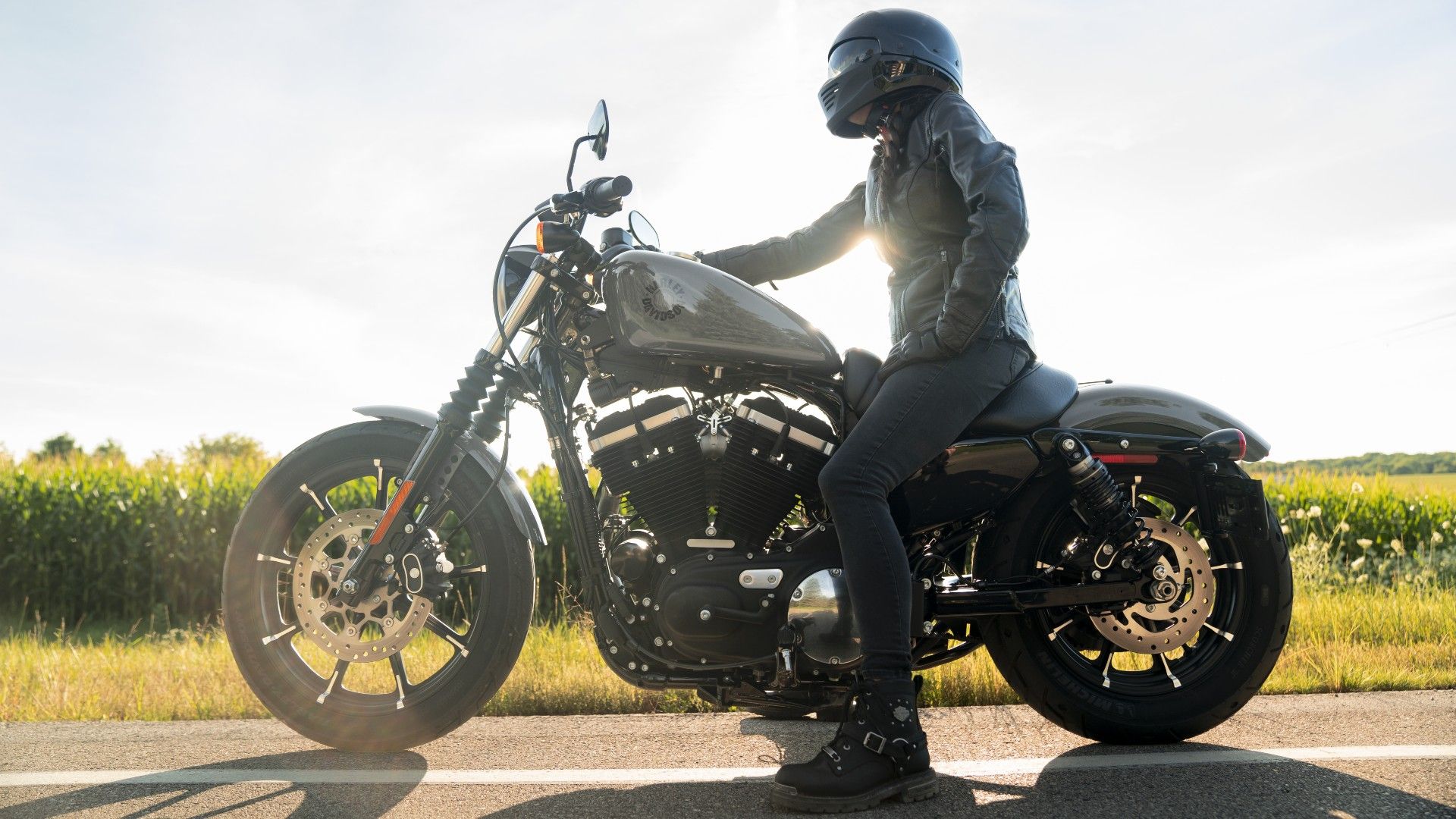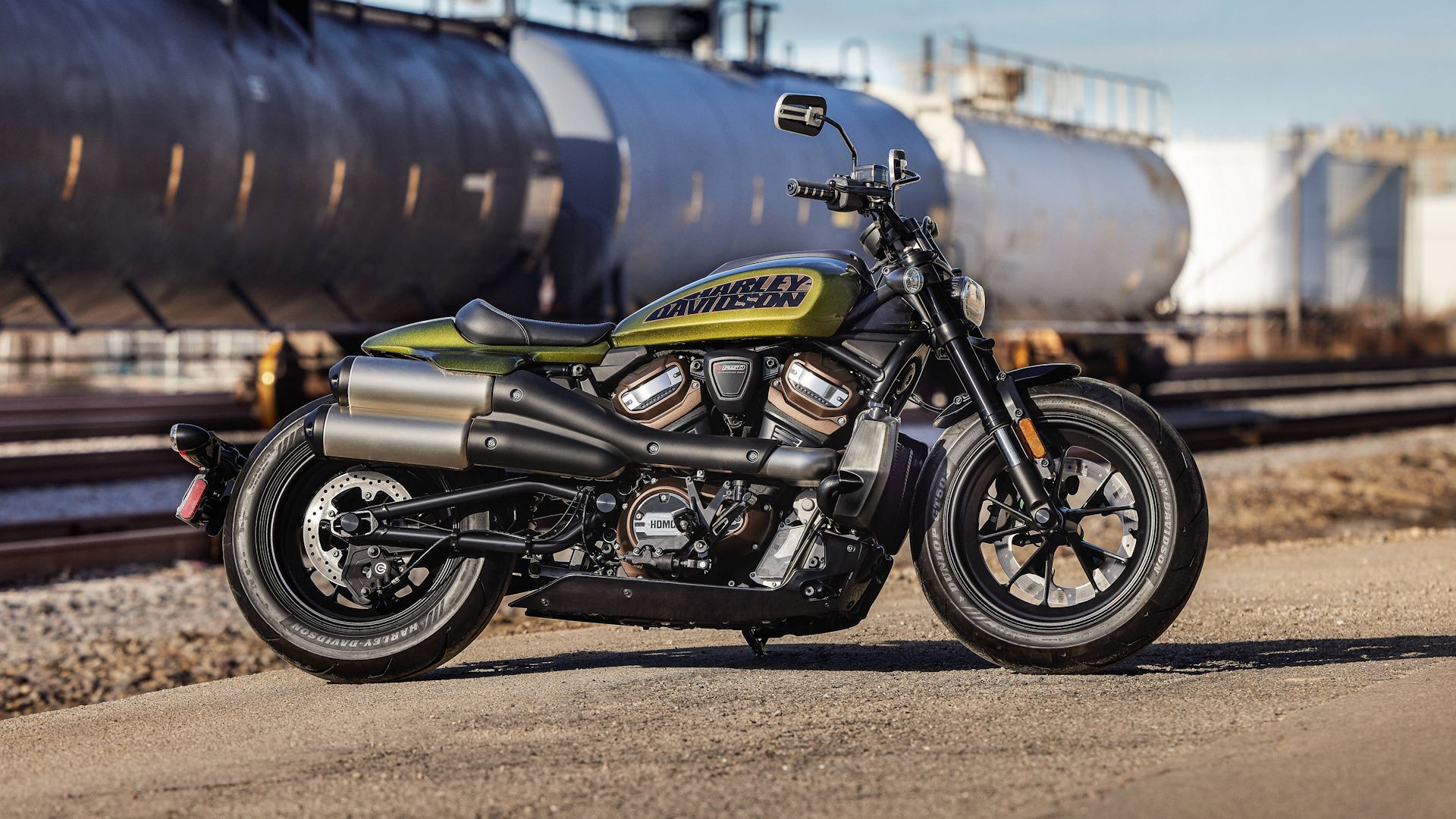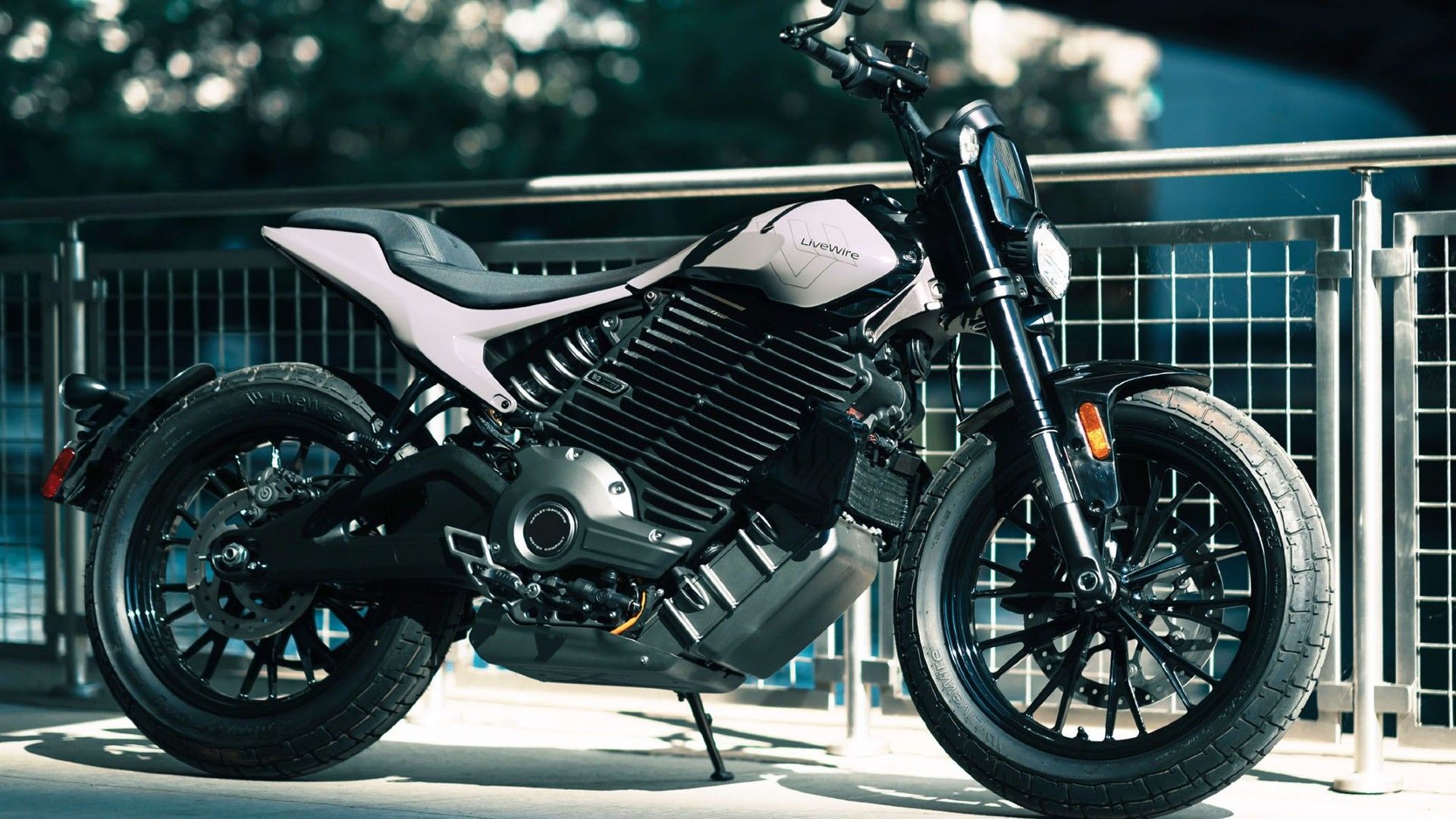The Harley-Davidson Sportster lineup is known for many things today — it’s a starter bike, a blank canvas for modifications, an excellent urban commuter, and an entry into the Harley Davidson family. But this ‘junior’ cruiser from HD is much more than meets the eye; the motorcycle has grown the brand’s global customer base, brought younger generations into the fold, and made cruisers exciting and cool for everyone. The line has been rumbling on for over five decades, and it’s evolved quite a bit over the years.
The Sportster lineup began as a bare-bones middleweight cruiser to fight off the British twins and singles but quickly grew into a series that pushed the boundaries, won races, jumped cars, saw HD swap hands between parent companies, housed the most modern Harley engines of the time, and so much more. Honestly, there’s not enough room on this page to jot down the rich history of the Harley-Davidson Sportster, but we can make do with some pictures that showcase the evolution of this famous model.
10 The Predecessor: Model K Series
The Harley-Davidson Model K bikes weren’t Sportsters, but they built the foundation for the latter ones that followed. The Model K bikes were the new middleweight from the brand, featuring a Flathead 45 engine with four-speed transmission, a hand-clutch and a foot-gear shifter, and a hydraulic suspension setup — they were the first civilian bikes to feature that! While the Model K motorcycles may not be pure Sportster, they are inception of the idea of a middleweight cruiser motorcycle that could compete with the British motorcycles that were making their way into the States.
Notable Model K Series Bikes:
- Model K and KK (1952 to 1953): 750cc, side-valve Flathead 45 engine
- Model KR race bike (1953 to 1969), 888cc side-valve Flathead 45 engine with increased stroke
- Model KH and KHK (1954 to 1956): 888cc side-valve Flathead engine with higher compression
9 The First of Its Kind: XL Series (1957)
The Model K Series set the template for the Sportsters, but our beloved line debuted in 1957 with the XL series, featuring the Ironhead engine. The first Sportsters were 883cc and 1000cc cruisers, ideal for spirited riding, and the lively Ironhead engine was the workhorse that propelled Sportsters for almost three decades. The XL series, including the high-compression variants, started a new era of motorcycling in the country by giving BSA, Triumph, and Norton motorcycles a run for their money. This was also the generation when the iconic peanut fuel tank debuted, and Harley-Davidson followed this series’ template until the 1990s.
Notable XL Series Sportsters
- XL (1957 to 1985): 883cc and 1,000cc Ironhead over-head valve engines with cast-iron heads
- XLFH (1958 to 1971): Ironhead 883cc and 1,000cc engines
- XR-750 (1970 to 1977): 750cc overhead-valve Ironhead engine
- XLCR (1977 to 1978): 1,000cc overhead-valve Ironhead engine
- XLS Roadster (1979 to 1985): 1,000cc Ironhead engine with a four-speed transmission
- XL Evolution (since 1986): 883cc, 1,000cc, and 1,200cc Evolution engines
8 A Turbulent Affair: AMF Era Sportsters (1969 to 1981)
Harley-Davidson is well acquainted with tough times, and the 1980s were one of them when the AMF corporation bought the brand. While some purists may argue for AMF-era Sportsters, the bikes built in this era were responsible for leaving a stain on the brand’s reputation. AMF saved Harley-Davidson from bankruptcy, but the Sporters cemented the reputation for leaving oil, being unreliable, and vibrating the nuts off the bike in a few weeks. This stereotype still affects the sales figures for HD. The AMF-era Sportsters are credited for being some of the most dangerous bikes ever launched. But if you’re brave of heart, get one — they are quite a collectible and look really cool!
I used to feel bad taking customers’ money, the quality was so bad. [...] AMF was just about the ruination of Harley-Davidson — A Staten Island, NY, Harley Davidson Dealer (New York Times)
7 The Silver Lining: XR 750
While the AMF corporation largely ruined the brand’s reputation, on the bright side, this era gave us the XR 750 Sportster. Back in the day when HD launched the 750cc Sportster, a specific model became Evel Knievel’s favorite, which this legendary stunter used to jump over many cars. The XR750 wasn’t just a popular stunt bike, it was an accomplished race bike. This bike won 29 of 37 AMA Grand National Flat Track Championships — that’s more than any other bike in the AMA racing history. It got so popular that HD introduced a street-legal XR750 and XR1000 in 1983 for the masses. Even today, getting your hands on one of the XR750s is a dream for many flat-track and stunt enthusiasts — it’s what they grew up dreaming about!
The Achievements Of The XR 750 Sportster
- Won 28 of 37 AMA Grand National Championships between 1972 and 2008
- The XRTT (road racing variant) was the last 4-stroke to win the AMA National road race at the 1972 Laguna Seca National
- XRTT, ridden by Cal Rayborn, won 3 of 6 races in the Trans-Atlantic Match Race series
- The go-to stunt bike for Evel Knievel, Bubba Blackwell, and Doug Danger
6 The ‘Evolutionary’ Sportsters (1984 to 2003)
Given AMF’s (mis)management of the company, HD found itself in the hands of Willie G. Davidson and other investors in 1981, who turned the company around by introducing bikes like the Super Glide and Low Rider. And fortunately, they finished the Evolution engine that began its development under AMF. Evolution-powered Sportsters debuted in 1986, giving these bikes the signature rumble many associate Harley-Davidson with. These Sportsters were a massive upgrade from the Ironhead Sportsters, given that the newer engines were lightweight aluminum, significantly improving their cooling and reliability. These Sportsters also got an electric start, so you wouldn’t have to risk your leg every morning trying to crank the engine.
Significant Changes To The Sportster Evo Lineup
- 1988: A constant velocity carburetor replaced the butterfly carburetor
- 1991: The four-speed transmission made way for a five-speed one
- 1991 to 1993: The chain-drive made way for the belt-drive
- 1996: The transmission now featured a high-contact-ratio gearbox
- 1998: The XL1200S got high-performance cams and dual spark plug heads
- 2004: Rubber-mounted Evo engine that decreased vibes
- 2007: Fuel injection becomes standard on all Sportsters
5 The Actual ‘Evolutionary’ Sportsters (2004 to 2008)
The Sportster lineup already had the Evolution engine and some tricks up its sleeve, but the real ‘evolution’ came between 2004 and 2008. These Sportsters finally featured five-speed gearboxes, belt drives, and refined styling, but they were still analog motorcycles that offered a raw riding experience. The 883 and 1200 Sportsters of the era became bestsellers in the States, and for almost twenty years, they were the entry point into the Harley-Davidson brand. If the Sportsters receive so much love in the States today, it is likely, thanks to these modern Evolution Sportsters, that they could finally stand their ground against Japanese and British cruisers.
Motorcycles That Used The Evo Engine
- Sportster 883
- Sportster 1100cc
- Sportster 1200 Custom, 1200 Roadster, and 1200 Forty-Eight
- Super Glide II with the Evo 1340cc engine
- Super Glide, Electra Glide, and Street Glide: 1340cc Evo engine that was replaced with the 1450cc Evo twin-cam engine in 1998
4 The Night In Shining Armor: Nightster (2007)
One thing that made Sportsters so popular was their customizability — they were blank slates for your creativity and money. Even HD was actively pushing its Screamin’ Eagle brand to the consumers, and in that attempt, they launched an all-blacked-out version of the Sportster called the 1200 Nightster. It wasn’t the first blacked-out Harley, but the first one that resonated with the crowd, especially newer bikers — who were largely missing from the brand’s base. Thanks to the 1200 Nightster, HD finally sold their bikes to the younger generation looking for something edgy and fun, not classic and old-school. Even today, HD offers all Sportsters and other bikes in black-out trims.
3 The Global Appeal (2009 to 2020)
In 2009, Harley-Davidson started simplifying the lineup and making it more stylized for modern times. The two bikes that proved to be the most successful for HD were the 883 Iron and Forty-Eight. The Iron 883 was the cheapest Harley you could buy, and it was gorgeous — it’s still one of the best middleweight cruisers to buy on the used market. The Forty-Eight was a radical Sportster chopper with beefy wheels, a loud engine, and so much character it could fit in a Hollywood movie; it was an homage to the 1940s custom bikes and one of the first production bobbers in the world. Other noteworthy models of the decade were the Sportster Seventy-Two, 1200 Roadster, and the outgoing Nightster. These bikes are responsible for making HD a global brand, especially in countries like China and India, where consumers are price-conscious.
2 The Revolutionary Sportster S (2021 - on)
The era of analog Sportsters is gone; now, the HD Sportsters feature a modern, liquid-cooled 1250cc Revolution max engine that produces a growl, not the signature rumble. It’s a purist’s nightmare, but they’re as much of a Sportster as their predecessors. Sure, they may look more like a street bike than a cruiser and feature technology you’d not find in a Sportster. However, these are still excellent entry-level HD cruisers that offer exciting ride experiences for the masses — it’s what the Sportster lineup has always been about. These Sportsters are so refined and reliable that they are finally fixing the damage that the AMC-era Sportsters caused to the brand image.
Revolution Max 1250 Engine Specifications
| Engine Displacement | 1250cc |
| Engine Type | 60-degree V-twin, short stroke, liquid cooled, DOHC engine |
| Power | 150 horsepower @9,500 rpm |
| Torque | 95 pound-feet @ 9,500 rpm |
| Compression Ratio | 13:1 |
| Bore x Stroke | 4.13 in x 2.83 in |
1 The Future of Sportsters: Electric Or Nothing
The Harley-Davidson Sportster lineup has come a long way in half a century, building a legacy that only rare bikes can come close to. However, the future may look bleak if you’re a fan of ICE engines. Harley-Davidson aims to go all-electric in the future, and Sportster may be one of the first bikes to transition to electric motors. The LiveWire is what the Sportsters will likely be like, albeit with a different styling — if we are lucky. But that’s not bad; as mentioned above, Sportsters have always been the peppiest of Harleys, and an electric Sportster powered by the fast-accelerating Revelation PM motor would be terrific to ride. The only thing we’d miss is the engine sound.

